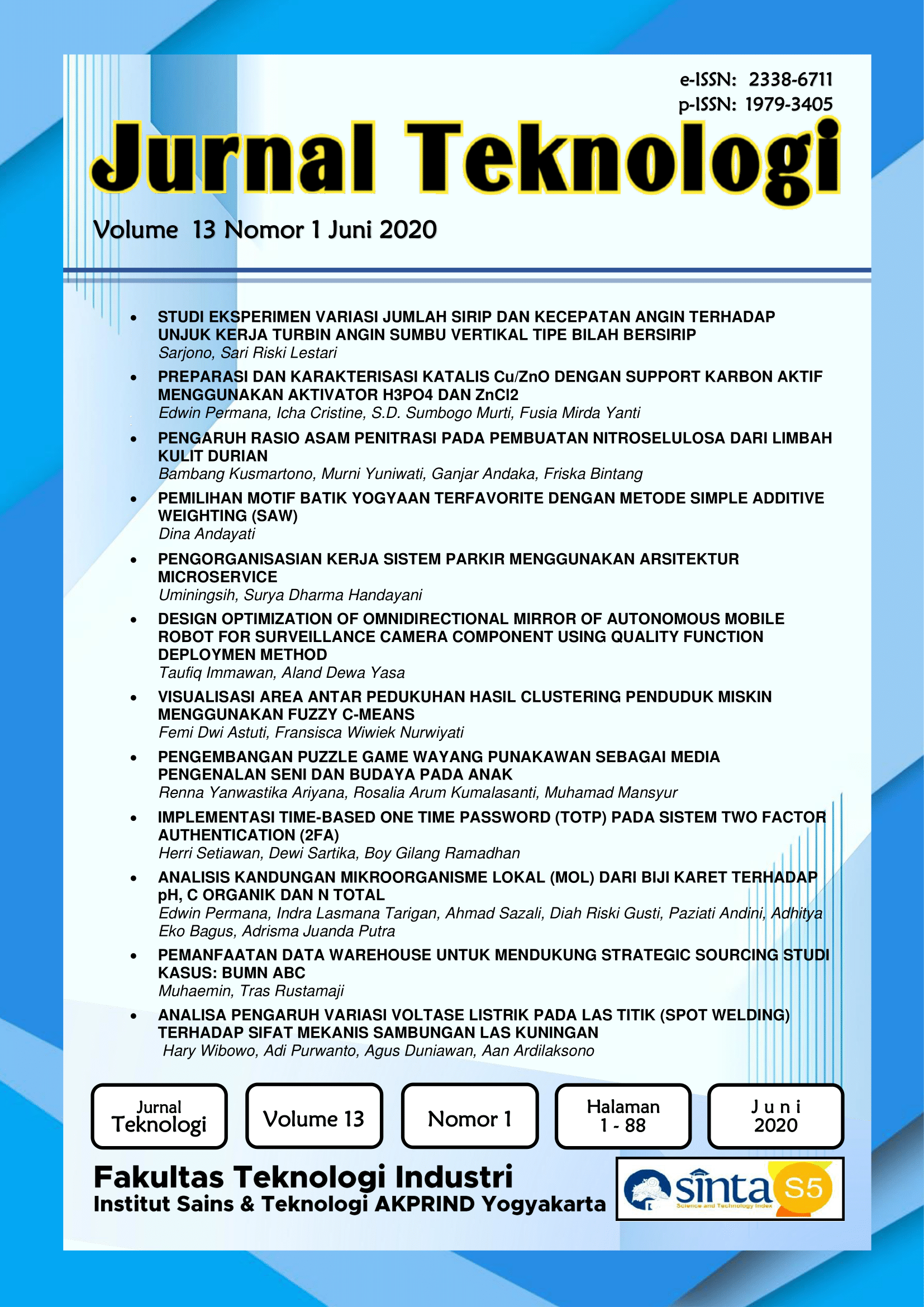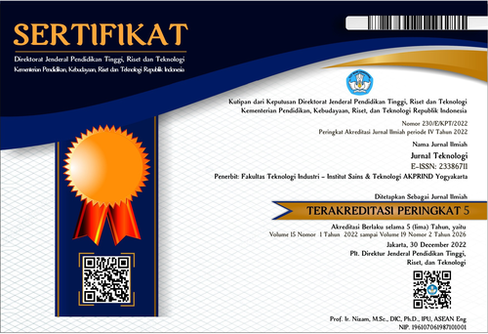DESIGN OPTIMIZATION OF OMNIDIRECTIONAL MIRROR OF AUTONOMOUS MOBILE ROBOT FOR SURVEILLANCE CAMERA COMPONENT USING QUALITY FUNCTION DEPLOYMEN METHOD
DOI:
https://doi.org/10.3415/jurtek.v13i1.2935Keywords:
AMR, omnidirectional vision, direction determination, recognitionAbstract
Currently, the use of automation has become a useful tool to monitor manufacture in improving work efficiency and safety. One way the use of automation is applied in the monitoring process is the Autonomous Mobile Robot (AMR) which is often used to recognize objects with its camera sensors based on the direction of motion, position, and shape of the objects. However, conventional camera sensors on AMR have a limited point of view on the object. This problem can be solved by adding an omnidirectional mirror on the camera, which enables the camera to capture objects with a 360 degree view in one frame. However, the addition of omnidirectional mirror in general may lead to high cost production. Therefore, this study aims to design an omnidirectional mirror that is cost-effective and suitable to be integrated with the cameras. The design process of this study uses a Quality Function Deployment (QFD) approach to identify the best features related to the material and arrangement of the omnidirectional mirror’s angle. The proposed result of the omnidirectional mirror design hopefully will capture a better and more optimal quality of the object at a lower cost. In practice, AMR added with omnidirectional mirror can raise the efficacy of the surveillance system by capturing clearer images. Consequently, the use of AMR can contribute further to various sectors in life, including manufacturing processes, home industries, traffic, and many more.
Downloads
References
Bruckstein A., Richardson T. (2000). Omniview Cameras with Curved Surface Mirrors. IEEE Workshop on Omnidirectional Vision : Hilton Head, SC, USA.
Cheng, L. C., & de Melo Filho, L. R. (2007). QFD in managing product development. São
Paulo: Blücher (in Portuguese).
G., L. Marcenaro, C. Coelho, etal., Dual camera intelligent sensor for high definition 360 degrees surveillance, IEE Proc. : Vis. Image Signal Process. 152 (2) (2005) 250–257.
D. S., et.al. (1999). A Real Time Detection Algorithm for Direction Error in Omnidirectional Image Sensors for Mobile Robots. IEEE International Conference on Robotics & Automation, Detroit, Michigan.
Lopez, G., Ribeiro, F. “Catadioptric system optimisation for omnidirectional Robocup MSL robots”. In RoboCup 2011: Robot Soccer World Cup XV, 2012.
M. Tarhan, E. Altug, A catadioptric and pan–tilt–zoom camera pair object tracking system for UAVs, J. Intell. Robot. Syst. 61 (2011) 119–134.
Nalwa V. (1996). A True Omnidirectional Viewer. Technical Report, Bell Laboratories, Holmdel, New Jersey, USA.
Nayar S. K., Peri V. (1999). Folded Catadioptric Cameras. IEEE Computer Vision and Pattern Recognition Conference, Fort Collins, USA.
, A., Pinho, A., Martins, D., et al.”An efficient omnidirectional vision system for soccer robots: From calibration to object detection”. In Mechatronics, Volume 21, Issue 2, March 2011,p.399-410, 2010.
Downloads
Published
How to Cite
Issue
Section
License
Jurnal Teknologi provides immediate open access to its content in order of making research freely available to the public to support a global exchange of knowledge. All articles published in this journal are free for everyone to read and download, under licence CC BY SA.
Benefits of open access for the author, include:
- Free access for all users worldwide.
- Authors retain copyright to their work.
- Increased visibility and readership.
- No spatial constraints.




















